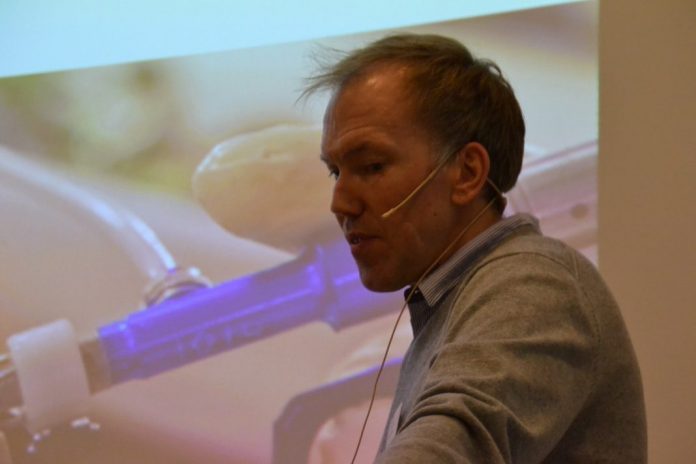The number of lumpfish producers in Norway has rocketed in recent years. Lars Jørgen Ulvan of Nordland Rensefisk believes it will be a hard slog for those wanting to start up in 2018.
SalmonBusiness reported on insane profit margins for lumpfish producers in 2017. It’s the same story in 2018; high demand, and this is attracting hopefuls who see the potential in the popular ‘lice terminator’, which is an appropriate name for the blue cleaner fish.
Prices lowering
According to Ulvan there are currently almost 40 producers engaged in raising lumpfish.
“We’ve noticed there are quite a few producers now, that prices are lowering and that there are many offering this product, Ulvan told SalmonBusiness.
Nordland Rensefisk is owned by Nova Sea, SinkabergHansen, Midt-Norsk Havbruk, Marine Harvest, Bjørøya Fiskeoppdrett and Salmonor.
Competitive market
“We have a dynamic owner group that takes the fish we produce,” said Ulvan, before adding that only a small percentage of their fish are sold on the spot market – about one percent.
“We have an agreement with the owners that is market price based. It’s size-dependent pricing, but we receive well over 20 kroner per fish.”
Nordland Rensefisk was established already in 2010, and has since then produced different species of cleaner fish for the aquaculture industry.
The market is now becoming competitive, and the company has realised the importance of ‘selling’ oneself to the market.
“It’s a matter of us producing fish that are even more robust and durable, and alternatively possibly breeding fish that are even more efficient,” said Ulvan.
Difficult to sell on spot
“I pity those starting up now. There’s at least 30-40 producers already. That’s an awful lot producing lumpfish, and at some point it will reach saturation point,” said Ulvan, who had a word of advice to potential producers:
“If you don’t have a customer ready that you have an agreement with, then it’s difficult to sell your fish on spot at the present time. We – and the majority of producers – are producing in such quantity now that we can produce all year round.”

